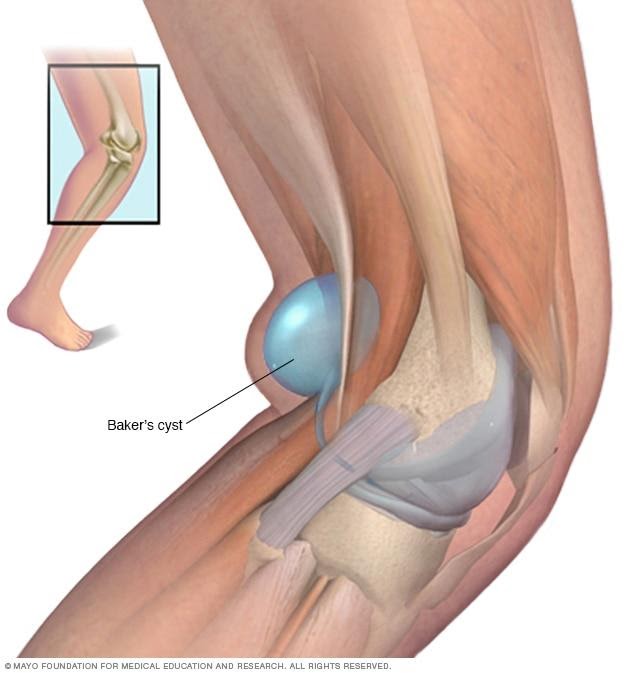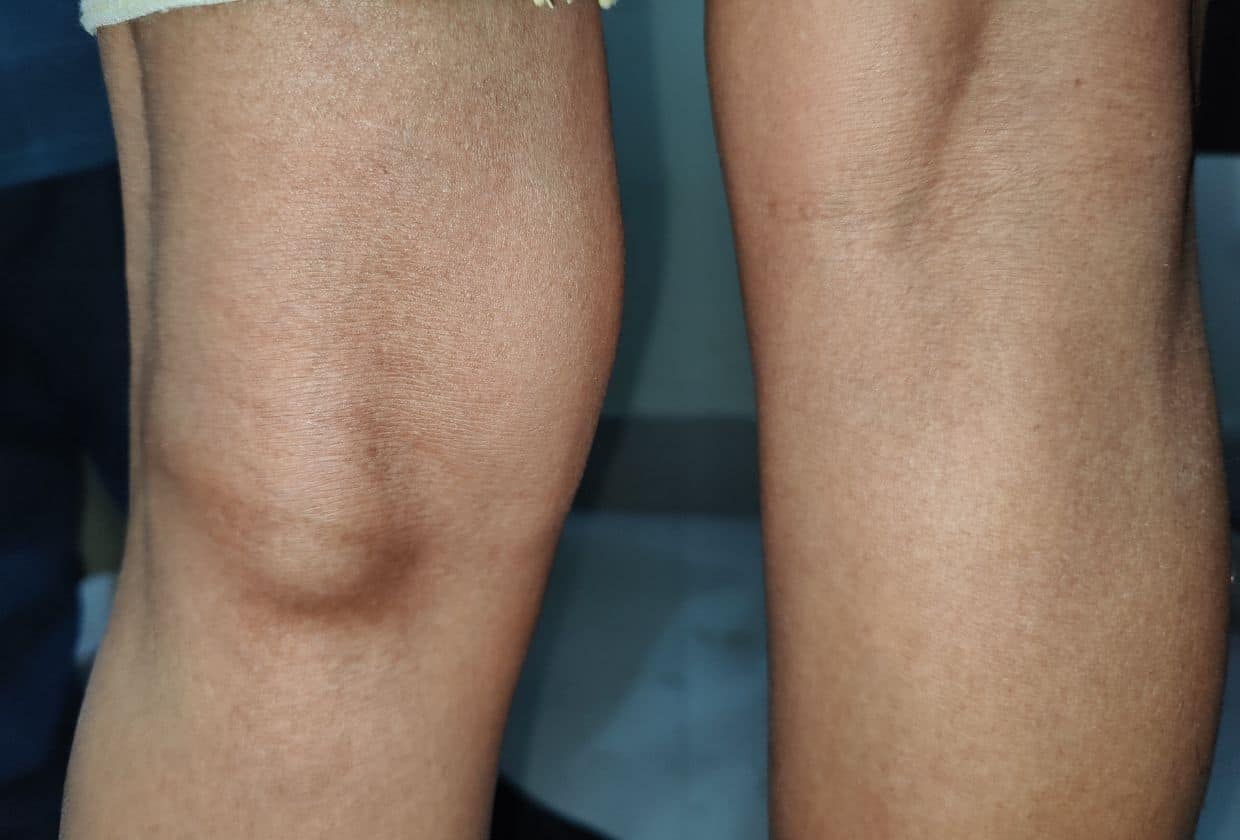A Baker’s cyst is a fluid-filled cyst that causes a bulge and a feeling of tightness behind your knee. The pain can get worse when you fully flex or extend your knee or when you’re active. A Baker’s cyst, also called a popliteal (pop-luh-tee-ul) cyst, is usually the result of a problem with your knee joint, such as arthritis or a cartilage tear. Both conditions can cause your knee to produce too much fluid, which can lead to a Baker’s cyst. Although a Baker’s cyst may cause swelling and make you uncomfortable, treating the probable underlying problem usually provides relief.

In some cases, a Baker’s cyst causes no pain, and you may not notice it. If you do have signs and symptoms, they might include:
Your symptoms may be worse after you’ve been active or if you’ve been standing for a long time.
A Baker’s cyst may burst which can result in synovial fluid leaking into the calf region, causing symptoms such as:
These signs and symptoms closely resemble those of a blood clot in a vein in your leg. If you have swelling and redness of your calf, you’ll need prompt medical evaluation to rule out a more serious cause of your symptoms.

Sometimes a Baker’s cyst will disappear on its own. However, if the cyst is large and causes pain, your doctor may recommend the following treatments:
Baker’s cysts associated with osteoarthritis usually improve with treatment of arthritis. Surgical intervention is rarely needed.
If you have pain and swelling behind your knee, see your doctor. Though unlikely, a bulge behind your knee may be a sign of a condition more serious than a fluid-filled cyst.

Ready to give your feet the care they deserve? Book your appointment online or call us and experience our expert podiatry services at any of our six clinic locations.